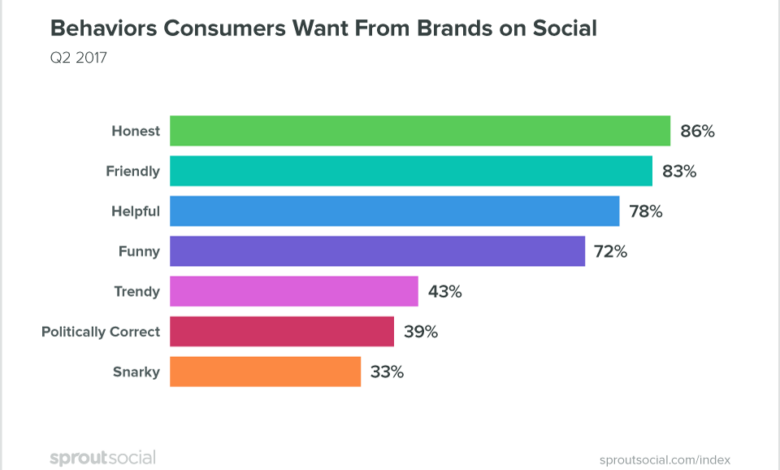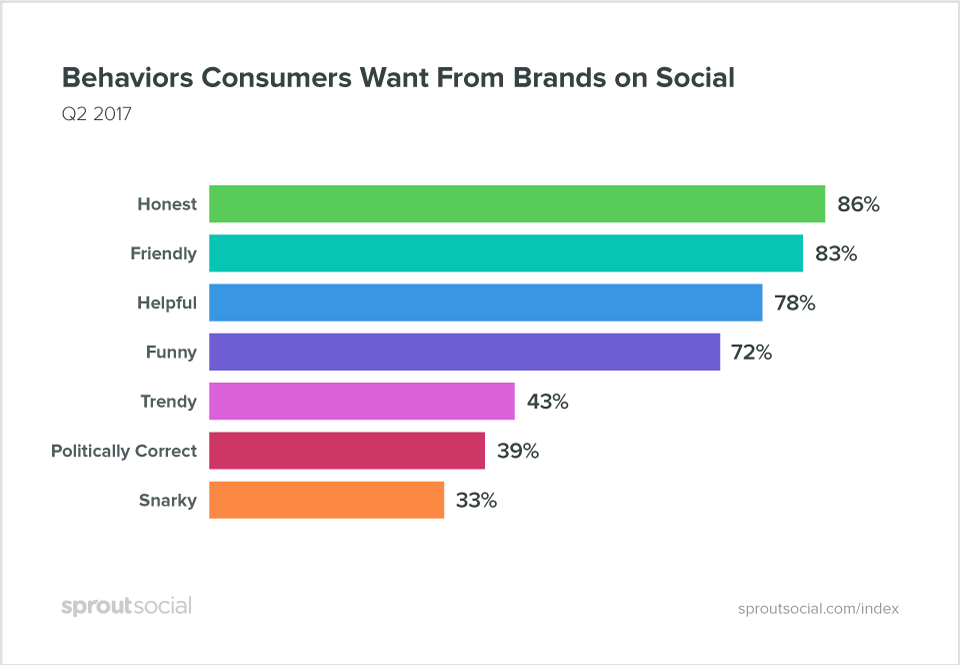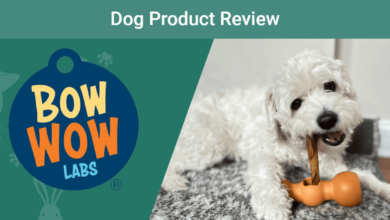
How to Define a Brand Voice That Attracts Business
How to define a brand voice that attracts business is crucial for success in today’s market. It’s not just about words; it’s about crafting a distinct personality that resonates with your target audience and fosters lasting connections. Understanding your brand’s identity, identifying your ideal customer, and defining the right voice are key elements in building a brand that captivates and converts.
This comprehensive guide will walk you through the process, from understanding your brand’s unique character to crafting a compelling brand voice guide and applying it effectively across various platforms.
We’ll delve into the importance of understanding your target audience and how their demographics and psychographics influence the best communication style. We’ll examine how clarity, consistency, and authenticity are essential for a powerful brand voice, exploring different tones and providing real-world examples across industries. Finally, we’ll look at maintaining a consistent voice across all communication channels and measuring its effectiveness to continuously optimize your brand’s presence.
Understanding Brand Identity

A strong brand identity is the bedrock upon which successful businesses are built. It’s more than just a logo or a catchy slogan; it’s the sum total of all the perceptions your audience has about your company. A well-defined brand identity ensures consistency in messaging and fosters a deep connection with your customers, leading to loyalty and advocacy. Understanding your brand voice is crucial to communicating this identity effectively.Brand voice is the unique personality of your brand, expressed through the language and tone you use in all your communications.
It’s the embodiment of your brand’s values, personality, and target audience, creating a distinct and recognizable style. This voice guides how you interact with customers, respond to feedback, and present your products or services. It’s an essential component of a cohesive brand identity.
Brand Voice and Personality
Your brand’s personality is multifaceted, encompassing several key elements. Tone is the emotional aspect of your communication – whether it’s playful, formal, or empathetic. Style refers to the specific vocabulary and grammatical structures you employ. Values, deeply embedded in your brand’s essence, dictate how you operate and what you stand for. Together, these elements shape the overall character of your brand.
Elements of Brand Personality
A brand’s personality isn’t static; it’s constantly evolving. It’s crucial to identify and articulate the key characteristics that define your brand.
- Tone: This encompasses the emotional impact of your communication. Examples include formal, informal, humorous, or serious. A tech startup might adopt a playful, innovative tone, whereas a luxury brand would likely use a sophisticated, refined tone.
- Style: This is the specific language and structure you use. It includes word choice, sentence structure, and even the overall cadence of your communication. A law firm would likely use precise and formal language, whereas a fashion brand might use descriptive and evocative language.
- Values: Your brand’s values are the principles that guide your actions and decisions. These values influence your tone and style, providing a framework for all your communications. For example, a sustainable brand will emphasize environmental consciousness in all its communications.
These elements intertwine to create a cohesive brand experience. A consistent brand voice, reflecting your personality, helps customers understand and connect with your brand on a deeper level.
Defining Your Brand Voice
To effectively attract business, your brand voice must resonate with your target audience. A well-defined voice helps build trust and credibility, fostering customer loyalty and advocacy. Understanding your audience’s needs and preferences is crucial in shaping a voice that truly resonates with them.
| Brand Attributes | Target Audience | Desired Voice Characteristics |
|---|---|---|
| Innovative | Tech-savvy millennials and Gen Z | Playful, energetic, forward-thinking |
| Luxury | High-net-worth individuals | Sophisticated, refined, exclusive |
| Reliable | Professionals seeking solutions | Professional, knowledgeable, trustworthy |
This table illustrates how aligning your brand voice with your target audience can significantly impact your brand’s appeal. Matching your voice to your target audience ensures your messages connect with them on a deeper level, leading to increased engagement and ultimately, business growth.
Defining a brand voice that resonates with customers and drives business is crucial. Think about the personality you want your brand to project – is it sophisticated and elegant, or fun and approachable? Finding the right tone for your luxury brand requires a nuanced approach, which is where advanced social media management agencies for luxury brands, like those specialized in luxury brand management , come in handy.
They help refine your brand voice across all platforms, ensuring consistency and maximum impact. Ultimately, a strong, consistent brand voice is key to attracting and retaining customers in today’s competitive market.
Identifying Target Audience: How To Define A Brand Voice That Attracts Business
Knowing your target audience is crucial for crafting a brand voice that resonates and drives business. A voice that speaks directly to your ideal customer builds trust and fosters a connection, leading to higher engagement and ultimately, more sales. Understanding who you’re talking to is the bedrock of any successful brand strategy.Understanding the nuances of your target audience goes beyond basic demographics.
Psychographics – the attitudes, values, interests, and lifestyles of your audience – provide a much richer understanding. This insight helps you tailor your brand voice to speak their language, address their needs, and create a genuine connection.
Importance of Understanding Demographics and Psychographics
The specific characteristics of your target audience profoundly influence how you communicate. Demographics, such as age, gender, location, and income, provide a basic framework. Psychographics, on the other hand, delve into the motivations, desires, and beliefs that drive consumer behavior.
Examples of How Different Demographics Influence Brand Voice
Consider a company selling high-end athletic wear. A target audience comprised primarily of young, affluent millennials might respond positively to a brand voice that’s modern, edgy, and focused on performance and lifestyle. Conversely, a brand targeting senior citizens might benefit from a more traditional, reassuring, and health-conscious voice, emphasizing quality and comfort. A brand targeting Gen Z might adopt a more playful, informal, and social voice, emphasizing community and authenticity.
Examples of How Different Psychographics Influence Brand Voice
A company selling eco-friendly products might tailor their voice to resonate with environmentally conscious consumers. Their language would likely emphasize sustainability, responsibility, and ethical production. On the other hand, a company selling luxury goods might use a sophisticated and exclusive tone to appeal to consumers who value prestige and exclusivity.
Comparing Communication Styles for Different Target Audiences
The communication style should mirror the values and expectations of the target audience. A formal, professional tone works well for business-to-business (B2B) communications, while a more casual and engaging style might be better for consumer-facing brands.
Gen Z vs. Baby Boomers: A Voice Comparison
| Characteristic | Gen Z | Baby Boomers |
|---|---|---|
| Tone | Playful, informal, inclusive, authentic, and relatable | Respectful, straightforward, and often traditional |
| Language | Acronyms, slang, emojis, and social media-influenced language | Formal, concise, and often less experimental with language |
| Content Style | Short, punchy content with visual elements, and often conversational | Detailed information and more traditional formatting. |
| Brand Personality | Innovative, forward-thinking, and often focused on community and social impact | Established, reliable, and often value-driven |
Understanding the intricacies of your target audience is essential. This knowledge allows you to tailor your brand voice to connect with them effectively and foster lasting relationships. This ultimately leads to stronger brand recognition, increased customer loyalty, and a significant boost in sales.
Defining Voice Characteristics
Crafting a brand voice that resonates with your target audience is crucial for building a strong and recognizable brand. A well-defined voice ensures your messages are consistent, memorable, and effectively communicate your brand’s personality. This section delves into the key characteristics of a compelling brand voice and provides practical strategies for implementation.A compelling brand voice is more than just a collection of words; it’s a reflection of your brand’s personality and values.
It’s the tone of your communication, the style of your language, and the overall feeling you evoke in your audience. A clear, consistent, and authentic voice creates trust and fosters long-term relationships.
Clarity in Brand Voice
Clarity in brand voice is essential for effective communication. Your target audience needs to easily understand your message, and a clear voice ensures they do. Vague or ambiguous language can lead to confusion and misinterpretation. This impacts customer understanding and potentially alienates potential clients. Employing precise and straightforward language, avoiding jargon, and using active voice enhances clarity.
Consistency in Brand Voice
Consistency is vital for building brand recognition and trust. A consistent voice across all platforms and communications creates a cohesive brand identity. Maintaining a consistent tone, style, and vocabulary in all your marketing materials, from website copy to social media posts, fosters familiarity and recognition among your target audience.
Authenticity in Brand Voice
Authenticity is paramount in today’s market. Consumers are increasingly drawn to brands that are genuine and transparent. A voice that feels genuine and relatable fosters trust and strengthens connections with your audience. This includes aligning your communication with your brand’s values and ensuring your messages resonate with your target audience’s needs and concerns.
Choosing a Suitable Tone
The tone of your brand voice is crucial in shaping the overall perception of your brand. It significantly impacts how your audience perceives your message. Choosing a suitable tone involves considering your brand’s personality and the needs of your target audience.
- Formal tone:
- Employing formal language, avoiding colloquialisms, and focusing on professionalism. Suitable for industries requiring a professional image, such as legal services or financial institutions.
- Informal tone:
- Using conversational language, incorporating humor, and employing a friendly, approachable style. This is often effective for reaching a younger audience or fostering a sense of community. This approach is effective in industries like social media platforms or casual clothing brands.
- Humorous tone:
- Using wit and humor to engage your audience and make your brand memorable. This approach can be successful for reaching a younger audience or creating a unique brand identity. This approach is particularly useful for brands aiming to stand out in competitive industries, like fast-food restaurants or tech companies.
Examples of Different Brand Voices
Different industries and brands employ distinct voices to achieve specific marketing goals.
- Tech Companies: Often use a modern, concise, and informative voice, focusing on innovation and technological advancements. Examples include Apple (modern and aspirational) or Google (informative and trustworthy).
- Luxury Brands: Usually employ a sophisticated, elegant, and authoritative voice to reflect exclusivity and high quality. Think Chanel or Louis Vuitton.
- Food Companies: Often use a warm, inviting, and descriptive voice, highlighting the taste, experience, and cultural significance of their products. Think of a food blogger or cooking channel.
Maintaining Consistency Across Platforms
Consistency is paramount for effective brand building. A consistent voice across all communication channels builds a strong brand identity. This approach helps create a cohesive brand experience.
- Website copy: Ensure website copy mirrors the brand voice established in other communications. Maintain a consistent tone and style to reinforce brand identity.
- Social media posts: Use the same voice on social media platforms as you do on your website and in other communications. This strengthens brand recognition.
- Email marketing: Maintain consistency in your email marketing campaigns, employing the same voice as other communication channels.
Table of Brand Voice Tones
| Tone | Pros | Cons |
|---|---|---|
| Formal | Professionalism, credibility | Can be perceived as stiff or impersonal |
| Informal | Friendliness, approachability | Can be perceived as unprofessional or casual in some industries |
| Humorous | Engaging, memorable | Can be inappropriate for certain products or services |
Crafting a Brand Voice Guide
Defining your brand voice is crucial, but translating it into actionable guidelines is equally important. A comprehensive brand voice guide ensures consistency across all communication channels, from social media posts to customer service interactions. This guide serves as a living document, a roadmap for everyone representing your brand, helping maintain a cohesive and recognizable identity.A strong brand voice guide clarifies how your brand speaks and writes, providing a framework for effective communication.
This goes beyond just tone; it encompasses style, vocabulary, and even the overall personality of your brand. It ensures that every interaction with your audience reflects your brand values and resonates with your target audience.
Steps to Create a Brand Voice Guide
This guide provides a structured approach to crafting a robust brand voice document. Each step builds upon the previous, leading to a comprehensive and actionable guide.
- Define Key Brand Attributes: Start by clearly articulating the core values, personality, and mission of your brand. Consider what makes your brand unique and how you want your audience to perceive it. This foundational understanding is essential for shaping your brand voice.
- Identify Target Audience Personas: Develop detailed profiles of your ideal customers. Understanding their demographics, psychographics, and communication preferences is key. This helps tailor your brand voice to resonate effectively with your target audience.
- Artikel Tone and Style: Describe the specific tone you want to convey – whether formal, informal, humorous, or serious. Artikel the preferred style – whether concise, detailed, poetic, or straightforward. This ensures consistency in the emotional impact of your messaging.
- Establish Vocabulary and Grammar Guidelines: Define the specific language, vocabulary, and grammatical structures your brand will use. This includes specific jargon, industry-specific terms, and any preferred grammatical conventions. It creates a consistent style for all brand communication.
- Compile Examples and Scenarios: Include diverse examples of how your brand voice should be used in various situations. Examples of social media posts, email templates, and website copy are valuable assets. Demonstrate how the brand voice is utilized in different contexts.
- Establish Review and Update Procedures: Define a process for regularly reviewing and updating the brand voice guide. Consider incorporating feedback from employees, customers, and stakeholders. This demonstrates a commitment to evolving with the brand.
Structure of a Brand Voice Guide
A well-structured brand voice guide is easily accessible and understandable. It acts as a reference point for all brand communications.
| Section | Content |
|---|---|
| Introduction | Overview of the brand voice guide’s purpose and scope. |
| Brand Overview | A brief summary of the brand’s mission, values, and personality. |
| Target Audience | Detailed descriptions of the target audience personas. |
| Tone of Voice | Examples of appropriate and inappropriate tones in different contexts. |
| Style Guidelines | Specific instructions on writing style, sentence structure, and vocabulary. |
| Vocabulary | A list of preferred words, phrases, and tone. |
| Examples | Real-life examples of brand voice usage across different channels. |
| Review and Update Procedures | Process for updating the guide to ensure its relevance. |
Incorporating Examples and Scenarios
Including examples strengthens the guide. They demonstrate the practical application of the brand voice.
- Social Media Posts: Provide examples of how to use the brand voice on different social media platforms. Showcase tone and style variations across different platforms.
- Website Copy: Include examples of website copy, from headlines to body text, that align with the brand voice. Showcasing different types of website copy demonstrates the guide’s applicability.
- Customer Service Interactions: Provide examples of how the brand voice should be used in customer service interactions. This includes email responses, phone scripts, and chat interactions. Highlighting customer service examples ensures a consistent experience across various channels.
- Marketing Materials: Include examples of how the brand voice translates into marketing materials, such as brochures, advertisements, and email newsletters. Showcase the brand voice in different marketing contexts.
Regular Review and Updates, How to define a brand voice that attracts business
Regular review is essential for maintaining relevance and effectiveness. Brand voice should evolve with the brand.
Defining a brand voice that attracts business is all about understanding your audience. Think about how you want to come across – friendly, professional, or maybe even a bit quirky. Consider if using website popups will actually help or hinder that message. For example, a jarring popup might clash with a friendly brand voice. Instead, research if popups are even the right tool for you.
You’ll want to make sure that your brand voice is consistent across all platforms, and that means considering your entire marketing strategy, not just individual elements. Checking out this helpful resource on whether or not to use website popups might just be the key to perfecting your brand voice: should i use website popups. Ultimately, understanding your audience and how to best communicate with them is the core of a successful brand voice.
- Feedback Mechanisms: Establish clear channels for collecting feedback from employees, customers, and stakeholders. This ensures the guide reflects current perceptions of the brand.
- Market Trends: Stay abreast of market trends and changes in audience preferences. Regular reviews allow you to adapt your brand voice to maintain relevance.
- Brand Evolution: A brand evolves. Regular reviews allow the brand voice to evolve with it, ensuring consistency with the brand’s overall direction.
Brand Voice Guide Template
A template helps streamline the process. It provides a structured approach.
“A well-designed template ensures consistency and clarity.”
| Section | Description |
|---|---|
| Brand Overview | Brand mission, values, and personality. |
| Target Audience | Detailed target audience profiles. |
| Tone of Voice | Examples of appropriate tones in different contexts. |
| Style Guidelines | Writing style, sentence structure, and vocabulary. |
| Vocabulary | Preferred words, phrases, and tone. |
| Examples | Social media posts, website copy, customer service interactions, and marketing materials. |
| Review Schedule | Frequency of review and update procedures. |
Applying Brand Voice in Practice
Bringing your brand voice to life isn’t just about crafting clever taglines; it’s about weaving that voice seamlessly into every interaction your brand has with the world. From the subtle tone of your website copy to the playful banter on social media, a consistent brand voice builds trust and recognition, ultimately attracting and engaging your target audience. Think of it as giving your brand a unique personality – one that resonates with your ideal customer and sets you apart from the competition.Applying a defined brand voice across all communication channels ensures a unified brand experience, fostering a strong and memorable brand image in the minds of your audience.
This approach builds trust, enhances brand recognition, and ultimately strengthens your brand’s connection with its target audience. Consistency in voice, tone, and style across different platforms is crucial for effective brand communication and fosters customer loyalty.
Applying Voice Across Communication Channels
Consistency in brand voice across various channels is paramount. Imagine a brand known for its playful, humorous tone on social media, but using formal, overly-technical language on its website. This disconnect confuses your audience and weakens your brand identity. The key is to translate your brand voice into each platform’s unique characteristics, while maintaining the core essence of your brand’s personality.
Adapting Voice for Different Platforms
Different platforms demand different approaches. A brand voice tailored for professional, informative website copy might require a more approachable, engaging tone for social media posts. For example, a formal, informative tone on a company blog might transition into a more conversational, engaging style on a social media platform like Twitter.
Maintaining Consistency in Messaging
A style guide, often part of a brand book, is invaluable in maintaining consistency. It acts as a reference point for all brand communication, outlining the approved voice, tone, and style. This guide should be accessible to all members of the team responsible for brand communication. Templates for social media posts, email signatures, and website content can be developed to ensure adherence to the brand voice.
Creating Engaging Content
Engaging content that aligns with your brand voice is key to attracting and retaining your audience. Think about the type of content your target audience enjoys and tailor your posts accordingly. For example, a humorous brand voice might use witty puns and relatable anecdotes in social media posts, while a professional brand voice might rely on data-driven insights and expert opinions.
Remember, your content should always reflect your brand’s personality.
Examples of Brand Voice Application in Social Media Posts
| Platform | Brand Voice | Example Post |
|---|---|---|
| Playful and Engaging | “Did you know that [brand name] was founded in [year]? We’re celebrating our anniversary with [special offer]. #brandname #anniversary” | |
| Informative and Helpful | “Looking for tips on [topic]? Check out our blog post for actionable advice: [link]. #[relevant hashtag]” | |
| Visually Appealing and Inspirational | High-quality image or video showcasing a product/service with a short, inspiring caption. | |
| Professional and Thought-Provoking | “In today’s market, [topic] is crucial for [target audience]. Here’s how [brand name] can help: [link].” |
Measuring and Evaluating Brand Voice
Defining a brand voice is only half the battle. To ensure your voice resonates with your audience and achieves business goals, you need a system for measuring its effectiveness. This involves understanding how your target audience perceives your brand voice and adapting your strategy based on that feedback. Monitoring and analyzing these factors is crucial for long-term brand success.Brand voice effectiveness isn’t about guesswork; it’s about quantifiable results.
By tracking key metrics and analyzing customer responses, you can refine your voice to better connect with your audience and drive business growth. This continuous improvement loop ensures your brand stays relevant and engaging in the ever-evolving market.
Methods for Tracking Brand Voice Effectiveness
Consistent monitoring of social media interactions, customer reviews, and brand mentions is vital. Monitoring tools and social listening platforms provide valuable insights into how your brand voice is perceived in real-time. By analyzing conversations surrounding your brand, you can identify areas where your voice resonates positively and areas needing adjustment.
Analyzing Customer Feedback and Responses
Customer feedback, whether from surveys, reviews, or direct interactions, offers crucial insights into your brand voice’s impact. Quantifying positive and negative feedback allows you to pinpoint specific aspects of your voice that resonate or fall short. This data allows for focused adjustments to align your brand voice more closely with your target audience’s expectations.
Tools and Metrics for Measuring Effectiveness
Several tools and metrics help gauge the effectiveness of your brand voice. Social listening tools, like Brand24 or Sprout Social, provide valuable data on brand mentions, sentiment analysis, and competitor analysis. Sentiment analysis tools assess the emotional tone of customer feedback, offering a clearer picture of how your brand voice is perceived. Customer feedback platforms like SurveyMonkey or Typeform can help you collect data to measure the effectiveness of your voice.
Using Data to Make Adjustments
Data analysis isn’t just about identifying problems; it’s about driving positive change. Using the insights gathered, you can refine your brand voice to better meet customer needs. Adjustments should be data-driven, not based on subjective opinions. For example, if customer feedback consistently highlights a perceived lack of approachability, your brand voice should be adjusted to create a more welcoming and approachable tone.
Key Performance Indicators (KPIs) for Evaluating Brand Voice
A robust set of KPIs provides a framework for measuring the success of your brand voice strategy. These metrics should align with your overall business goals.
- Brand Mentions: Track the frequency of brand mentions across various channels. A significant increase indicates positive brand awareness.
- Customer Engagement: Analyze metrics like comments, shares, and likes to assess audience engagement with your brand voice. Higher engagement suggests a more impactful and resonant voice.
- Sentiment Analysis: Monitor the overall sentiment surrounding your brand voice. Positive sentiment indicates that your voice resonates with the target audience.
- Website Traffic and Conversion Rates: Track how your brand voice affects website engagement and conversions. Stronger brand voice usually correlates with better website performance.
- Customer Feedback Scores: Monitor customer satisfaction scores and feedback to identify areas where your voice needs improvement. High scores suggest your voice aligns with customer expectations.
Examples of Successful Brand Voices

Crafting a compelling brand voice isn’t just about choosing words; it’s about connecting with your audience on a deeper level. Effective brand voices resonate with target demographics, building trust and fostering long-term relationships. Understanding how successful brands achieve this resonance provides valuable insights for developing a unique and impactful voice for your own business.Successful brands don’t just choose a voice; they meticulously tailor it to their unique identity and audience.
Their approach often involves a combination of careful consideration, testing, and adaptation to refine their communication style over time.
Detailed Examples of Successful Brand Voices
Numerous brands have demonstrated the power of a well-defined brand voice. These examples showcase a variety of approaches, illustrating how different tones and styles can effectively connect with different audiences.
- Nike: Nike’s voice is often characterized by its empowering and aspirational message. They consistently motivate their audience to strive for greatness, using imagery and language that promotes athleticism and self-improvement. This approach resonates with their target audience – active individuals who seek to push their limits. Their strength lies in inspiring action and embodying a positive, achievement-oriented ethos.
Nike effectively uses a confident and inspiring tone, often emphasizing the journey and the transformative power of sport.
- Patagonia: Patagonia’s voice is rooted in environmental consciousness and ethical consumerism. Their brand voice is honest, transparent, and passionate about sustainability. They use straightforward language and often highlight their commitment to environmental protection. This authenticity resonates with their target audience, environmentally conscious consumers who value ethical brands. Their success stems from their alignment with their values, which directly influences their communication style.
Defining a brand voice that resonates with customers is key for business success. Think about your target audience and how to communicate with them authentically. You need to consider factors like tone, style, and personality to create a distinct voice that helps you stand out. To ensure your website is optimized, proper handling of duplicate content is crucial.
This often involves using rel canonical tags correctly to tell Google which version of a page is the main one, and avoiding issues related to duplicate content in your SEO strategy. By taking care of these details, you’re not only improving your website’s ranking but also strengthening your brand voice for the long run. For a deep dive into strategies like dealing with duplicate content rel canonical style google seo , you’ll find the details you need.
Ultimately, a strong brand voice is crucial for attracting business and maintaining a recognizable online presence.
- Apple: Apple’s voice is sophisticated, minimalist, and focused on innovation and user-friendliness. They often employ understated language and emphasize intuitive design. Their target audience is often drawn to the sleek aesthetic and the promise of seamless technology. Their success is partly due to their consistent focus on a clean and sophisticated visual identity and communication that complements their products.
Comparative Analysis of Brand Voices
Analyzing different brand voices provides insights into the effectiveness of various approaches. Successful brands often demonstrate a strong alignment between their chosen voice and their brand values. Their consistency in tone and style helps reinforce their brand identity and build recognition.
| Brand | Industry | Brand Voice | Tone | Strengths | Weaknesses |
|---|---|---|---|---|---|
| Nike | Sportswear | Motivational, aspirational | Enthusiastic, confident | Inspiring, action-oriented | May not resonate with all audiences |
| Patagonia | Outdoor Apparel | Ethical, environmentally conscious | Straightforward, passionate | Connects with environmentally conscious consumers | Potential for perceived “preachy” tone |
| Apple | Technology | Sophisticated, minimalist | Understated, user-friendly | Appeals to a sophisticated tech-savvy audience | May appear inaccessible to less tech-savvy individuals |
| Coca-Cola | Beverages | Uplifting, nostalgic | Friendly, celebratory | Evokes feelings of happiness and community | Potentially perceived as overly simplistic or saccharine |
Maintaining Brand Voice Consistency
A strong brand voice isn’t just defined; it’s actively cultivated and maintained. Consistent application of your brand voice across all platforms and interactions is crucial for building trust, recognition, and ultimately, driving business. This ongoing effort ensures your brand message resonates with your target audience, fostering a consistent and positive experience.Maintaining a consistent brand voice is an ongoing process that requires a proactive approach.
It’s not a one-time task, but rather an ongoing effort to ensure that your brand communicates with a unified, recognizable, and impactful voice. Regular review and adjustment are necessary to ensure your brand voice stays relevant and effective over time.
Creating a System for Maintaining Consistent Voice
Establishing a system for maintaining consistent brand voice is vital for scaling your brand’s communication. A well-defined system allows different teams and individuals to contribute to the brand’s message without compromising its core values. This structure ensures that the brand’s personality and tone remain intact. A clear system also allows for quick identification and correction of any deviations from the brand voice.
- Develop a comprehensive brand voice guide that includes specific examples of appropriate and inappropriate language, tone, and style.
- Establish clear guidelines for how the brand voice should be applied in different communication channels, such as social media posts, email marketing, website copy, and customer service interactions.
- Define roles and responsibilities for ensuring brand voice consistency across teams, and create a process for tracking and reporting deviations from the established guidelines.
Implementing a Brand Voice Review Process
Regular review of brand voice application is crucial for ensuring consistency and effectiveness. The review process should be designed to identify potential areas for improvement and to ensure that the brand voice remains aligned with the overall brand strategy and target audience. This process is iterative and should be adapted as needed to remain relevant.
- Schedule regular reviews (e.g., quarterly or annually) to assess how the brand voice is being used across different platforms and interactions.
- Gather feedback from stakeholders, including customers, employees, and marketing team members, to gain insights into how the brand voice is perceived and how it can be improved.
- Analyze the effectiveness of brand voice application by tracking key metrics, such as customer engagement, brand sentiment, and website traffic.
Tools and Processes for Ensuring Consistent Voice
Implementing tools and processes that support brand voice consistency across teams is essential. A streamlined process ensures that everyone adheres to the brand voice guidelines. Tools can be customized based on team size and communication style.
- Employ a style guide that acts as a centralized repository for brand voice guidelines, examples, and resources.
- Utilize content management systems (CMS) with features that allow for tracking and enforcing brand voice standards. These features can flag content that deviates from established guidelines.
- Establish a communication channel for reporting and addressing brand voice inconsistencies. This could be a dedicated Slack channel or an email address.
- Conduct regular training sessions for all team members involved in brand communication, emphasizing the importance of adhering to the brand voice guide.
Flowchart for Maintaining Consistent Brand Voice
This flowchart Artikels the steps for maintaining a consistent brand voice over time.[Insert a flowchart image here. The flowchart should visually represent the following steps: 1. Review Brand Voice Guide; 2. Assess Current Application; 3. Identify Areas for Improvement; 4.
Develop Action Plan; 5. Implement Changes; 6. Monitor Results; 7. Repeat.]This iterative process ensures that the brand voice remains relevant and impactful over time.
Final Conclusion
Defining a brand voice that attracts business is a multifaceted process, but one that’s highly rewarding. By understanding your brand’s identity, identifying your target audience, and crafting a clear and consistent brand voice guide, you’re setting the stage for a strong brand presence and increased customer engagement. Regularly reviewing and updating your brand voice strategy is key to staying relevant and resonating with your audience as they evolve.
This guide provides a roadmap to creating a powerful brand voice that resonates with your customers and drives business success. Remember, consistency and authenticity are paramount in building a brand that people connect with on a deeper level.




